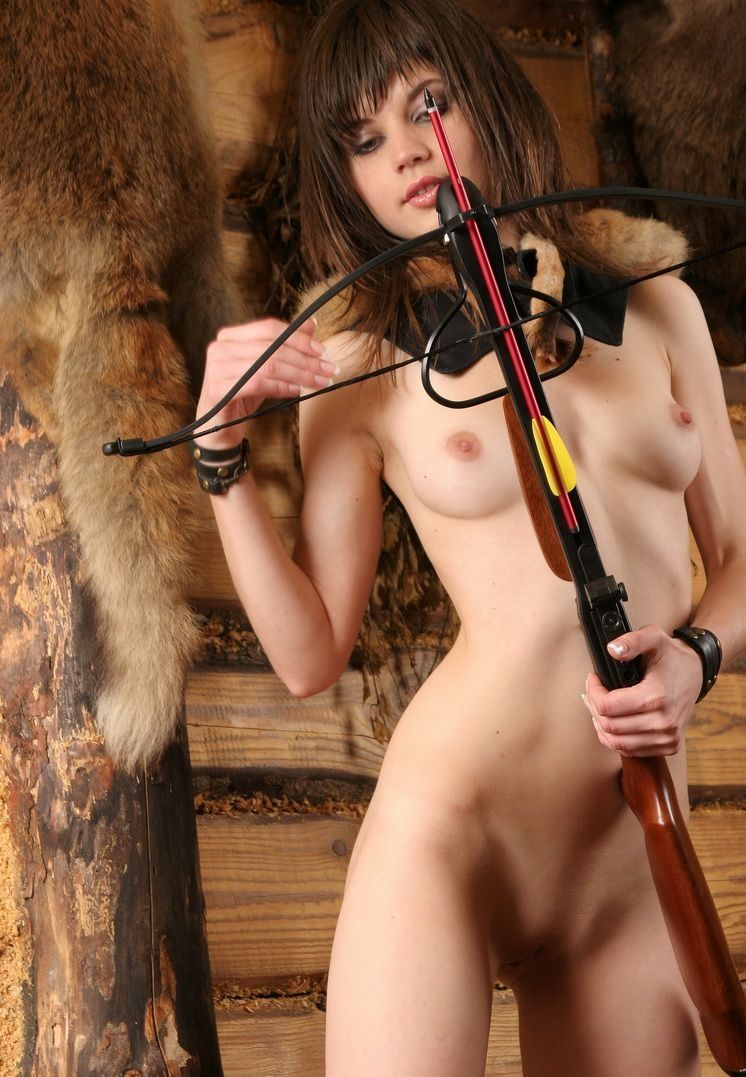|
|
Young Brunette Girl With A Crossbow Weapon
|
A crossbow is a weapon bow mounted on a stick (called a tiller or stock) with a mechanism in it which holds the drawn bow string. The earliest designs featured a slot in the stock, down into which the cocked string was placed. To fire this design, a vertical rod is thrust up through a hole in the bottom of the notch, forcing the string out. This rod is usually attached perpendicular to a rear-facing firing lever called a trigger or 'tickler'. A later design implemented a rolling cylindrical pawl called a 'nut' to retain the cocked string. This nut has a perpendicular center slot for the bolt, and an intersecting axial slot for the string, along with a lower face or slot against which the internal trigger sits. They often also have some form of strengthening internal 'sear' or trigger face, usually of metal. These 'roller nuts' were either free-floating in their close-fitting hole across the stock, tied in with a binding of sinew or other strong cording, or mounted on a metal axle or pins. Removable or integral plates of wood, ivory or metal on the sides of the stock kept the nut in place laterally. Nuts were made of antler, bone, ivory or metal (usually brass). A trigger system, (usually made of iron or steel from medieval times onwards), was used to retain the force of the cocked string in the nut and then release the nut to spin and the string to
shoot the bolt. Sophisticated bronze triggers with safety notches are known to have been used on crossbows from ancient China. Complicated iron triggers that could be released with little strength are known in Europe from the early 15th century. As a result crossbows could be kept cocked and ready to shoot for some time with little effort, allowing crossbowmen to aim better.
The bow (called the "prod" or "lath" on a crossbow) of early crossbows was made of a single piece of wood, usually ash or yew. Composite bows are made from layers of different material—often wood, horn and sinew—glued together and bound with animal tendon. These composite bows, made of several layers, are much stronger and more efficient in releasing energy than simple wooden bows. As steel became more widely available in Europe around the 14th century, steel prods came into use.
The crossbow prod is very short compared to ordinary bows, resulting in a short draw length. This leads to a higher draw weight in order to store the same amount of energy. Furthermore the thick prods are a bit less efficient at releasing energy, but more energy can be stored by a crossbow. Traditionally the prod was often lashed to the stock with rope, whipcord, or other strong cording. This cording is called the bridle.
|
|









